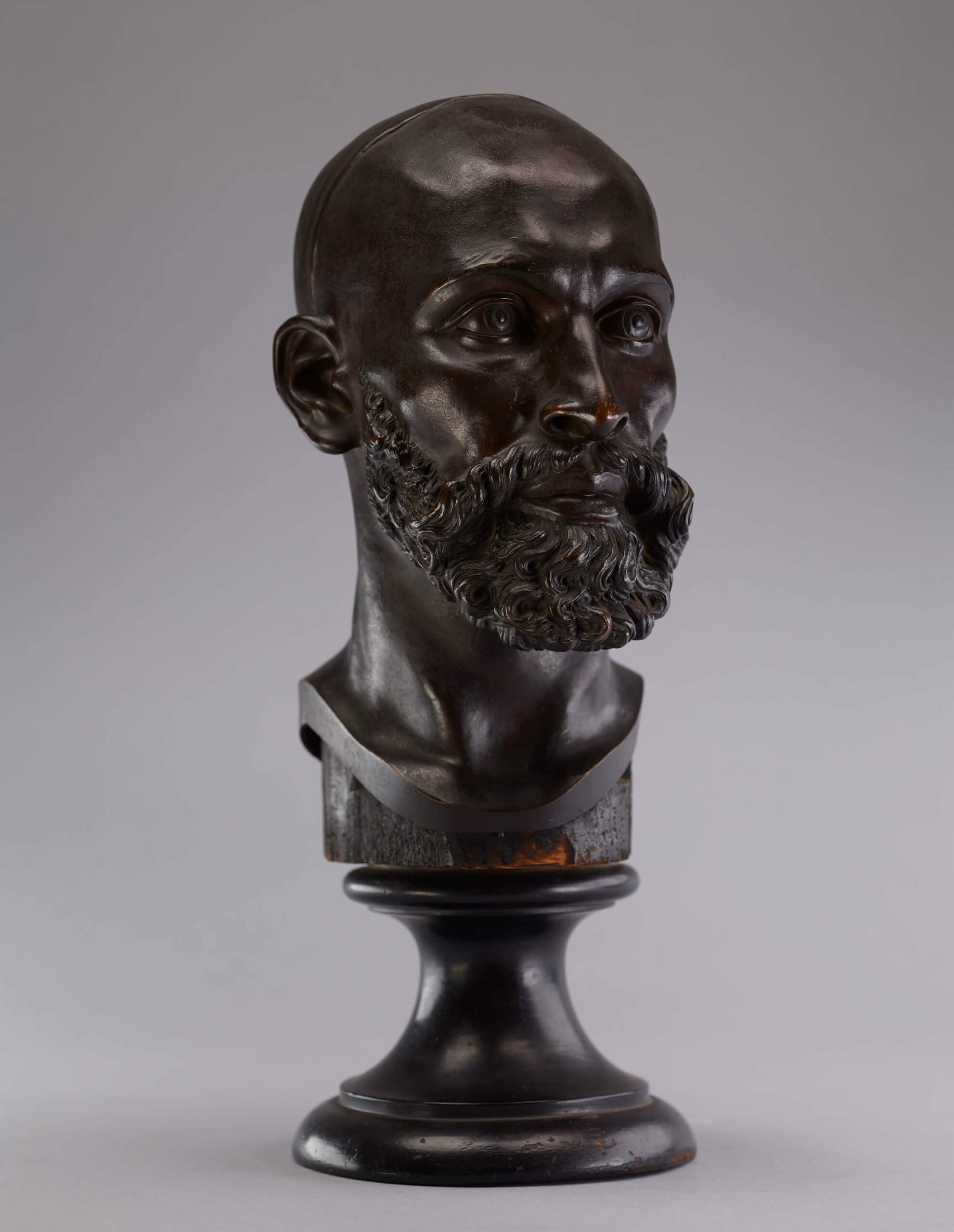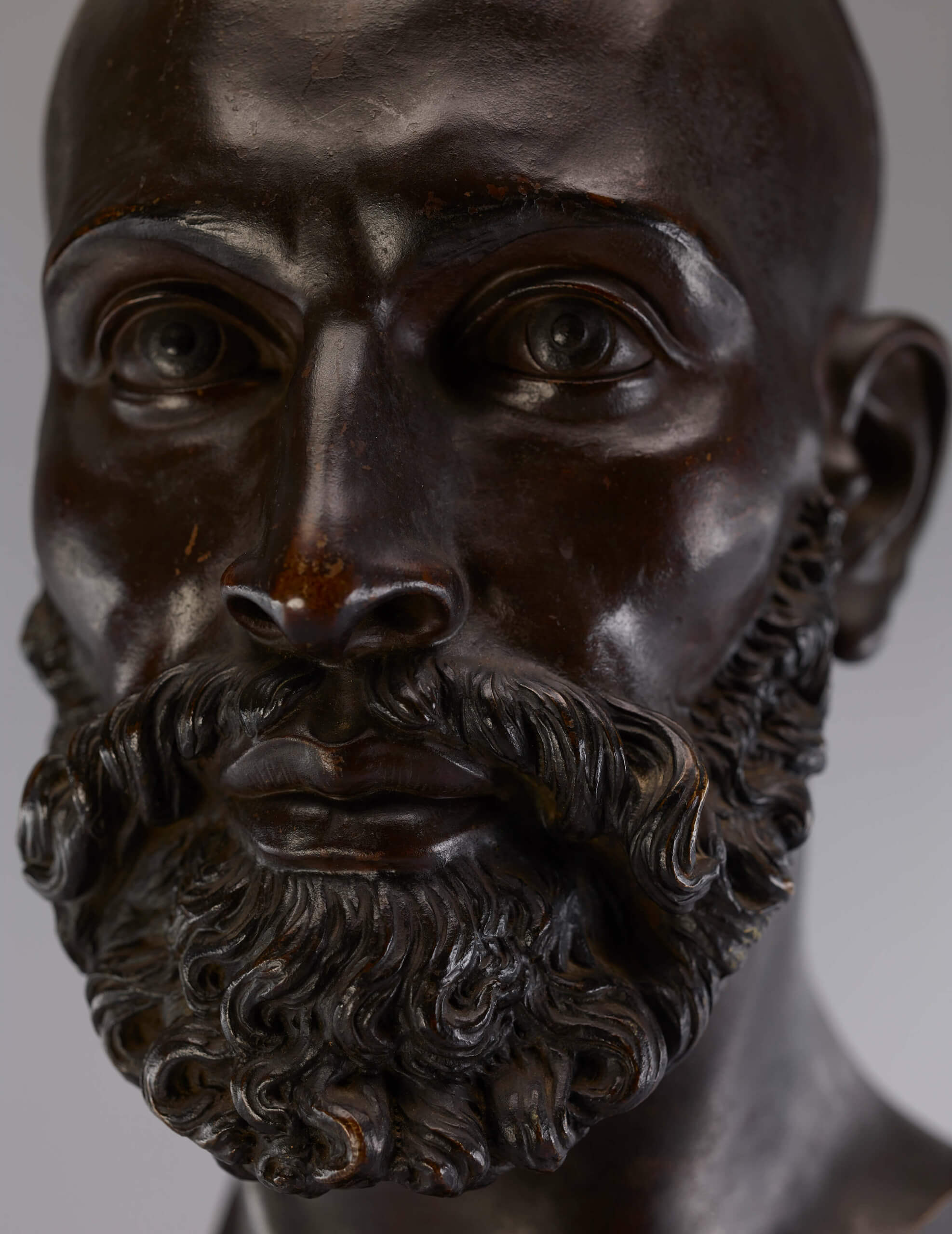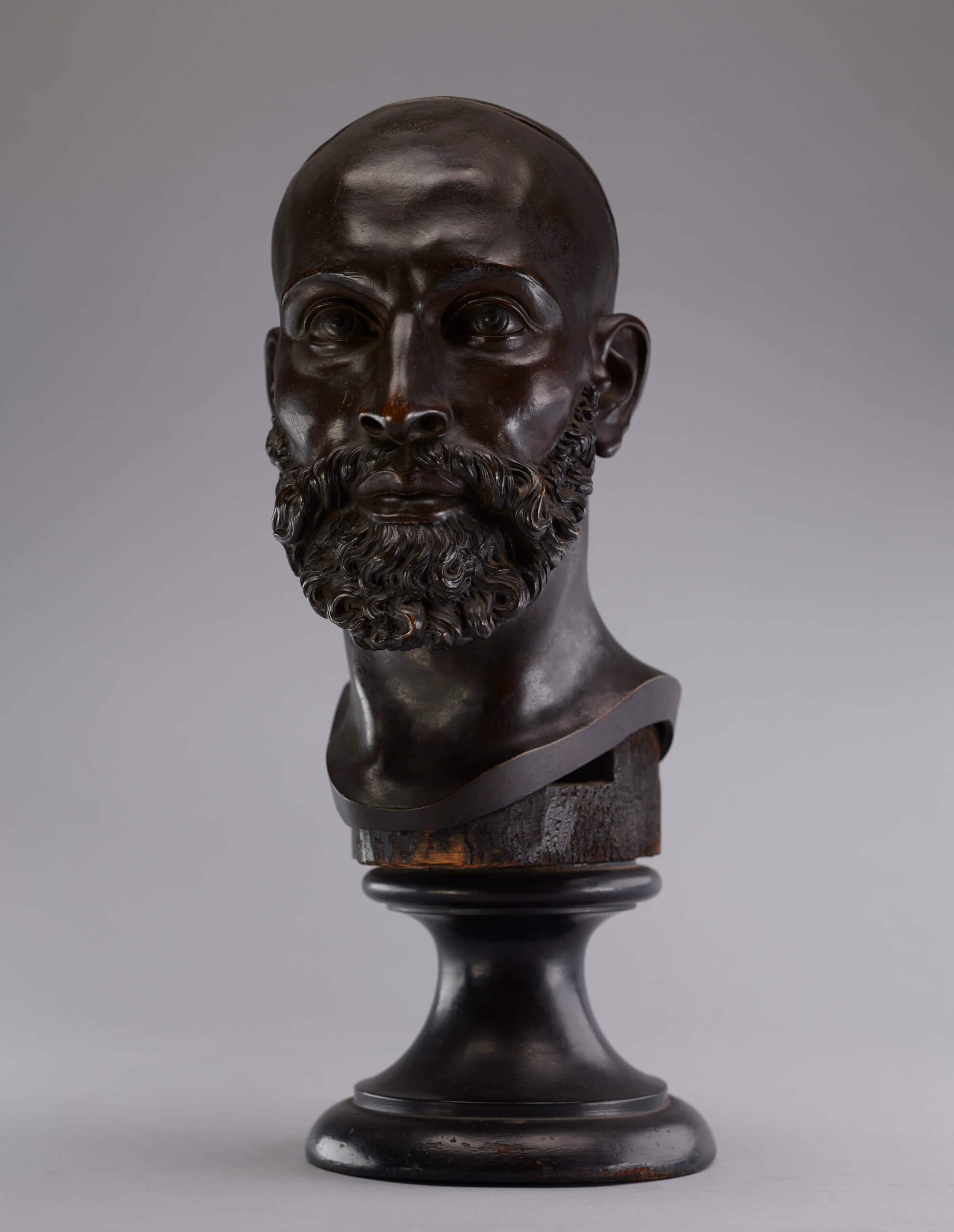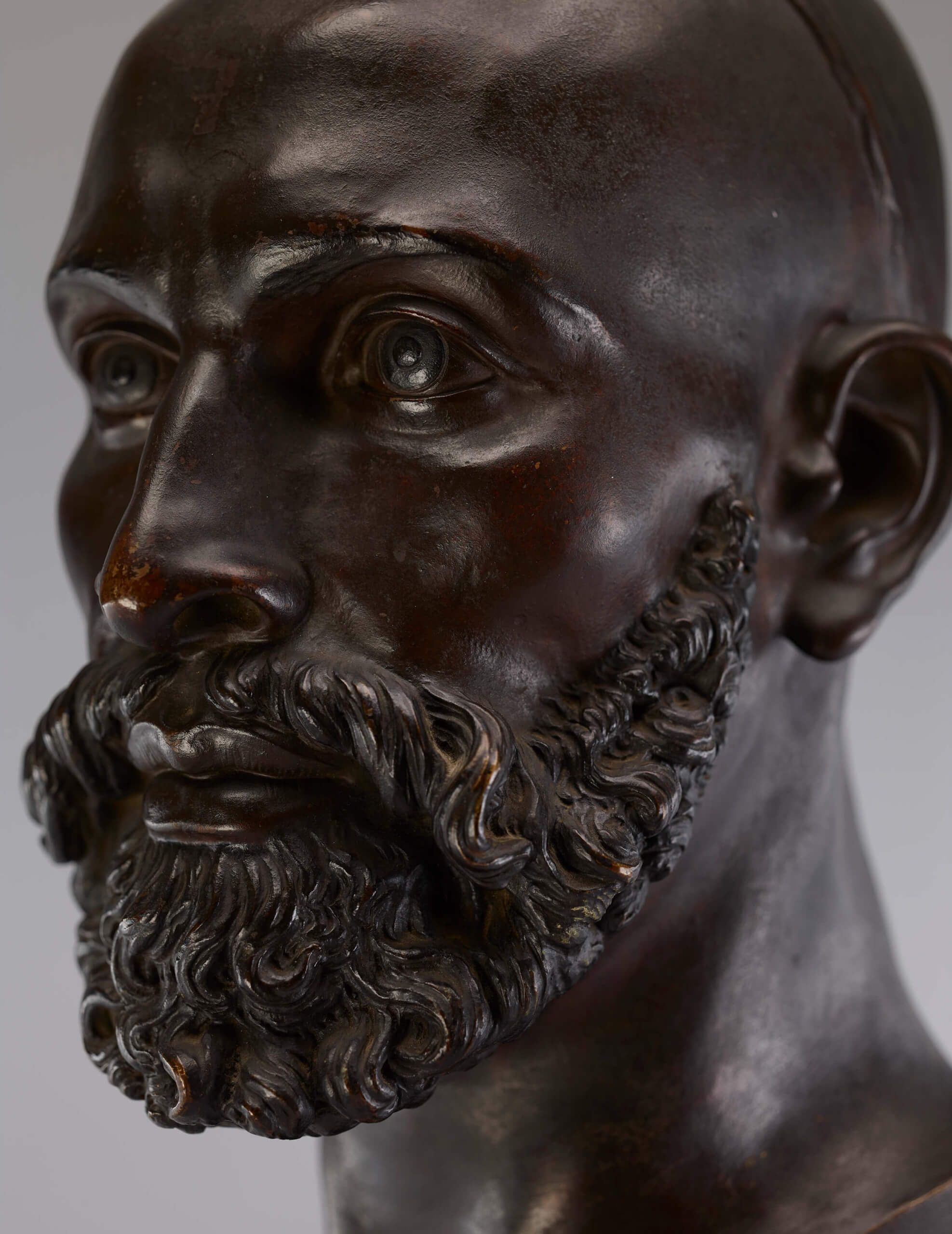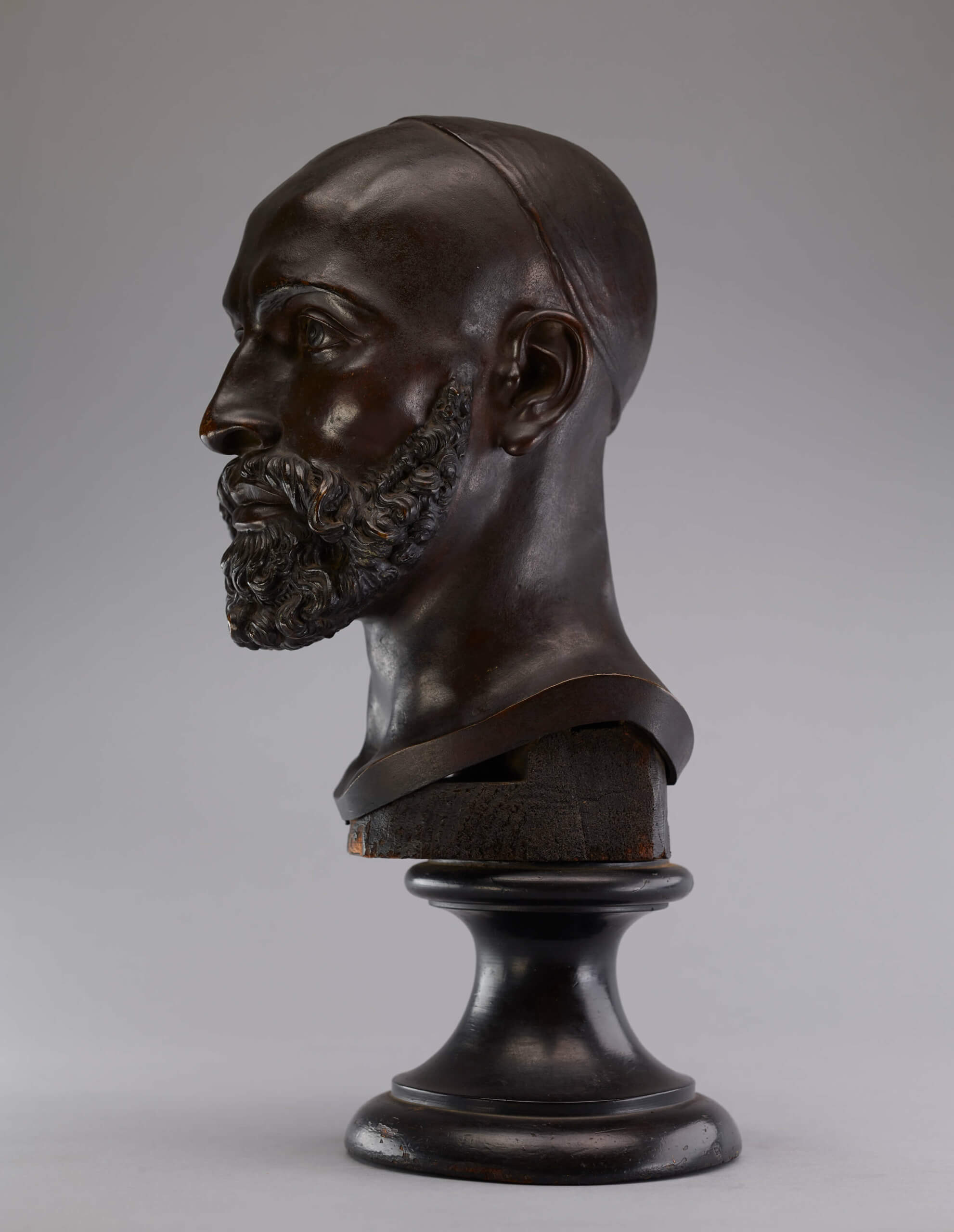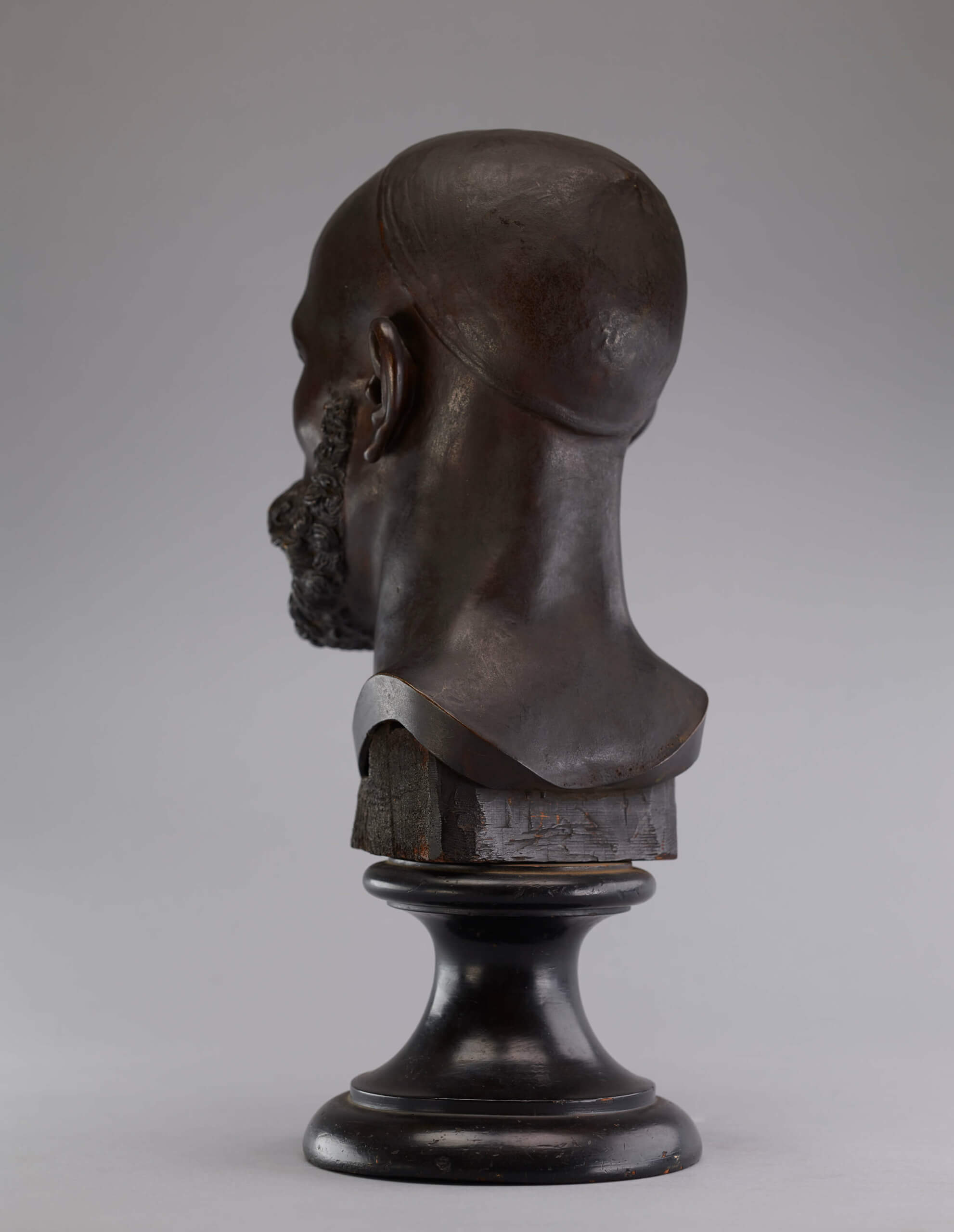

Chef-modèle in bronze with brown patina.
Total H. with the piedouche: 48 cm. (19 in.)
H. of the circular and moulded piedouche in blackened wood: 14 cm. (5 ½ in.).
PROVENANCE: the artist’s family by descent.
This chef-modèle (master model), mounted on a circular, moulded piedouche in blackened wood, has remained in the artist’s family by descent until the present day. Trace of it had been completely lost, even if it was suspected to exist. It constitutes a major rediscovery in the work of Charles Cordier. It is the ‘source’ cast that served as a reference and standard for all subsequent editions of this bust executed by the sculptor.
“Beauty is not the preserve of a privileged race, I have put forward the idea of ubiquity in the artistic world”, extract from a speech given in 1862 by Charles Cordier to the Anthropological Society.
A major figure in French sculpture under the Second Empire, totally in line with the great movements for the defence of freedoms that arose in the middle of the 19th century, Charles Cordier knew, like no other sculptor before him, how to magnify, through the great singularity of his talent and the triumph of his lavish polychromy, this ideal of beauty seen through the sole prism of “respect for the other”.
The sculptor made this famous portrait, known as the Arab of El Aghouat, during his second stay in Algeria between April and October 1856, and on his return to Paris executed the bronze master-model (chef-modèle) of this head presented here. The work, which is imbued with a stunning verism, displays an irreproachable quality of casting and patina. A chef-modèle is always intended to be perfect in every respect, which is why it is never intended to be sold, remaining the exclusive property of its creator. Here, it displays a form of naturalism that unfailingly supports the artist’s anthropological and ethnographic intentions, and gives us the exceptional opportunity to see this work completely “naked”, which Cordier would later systematically cover with burnous and other draperies in Algerian marble-onyx and polychrome marbles.
